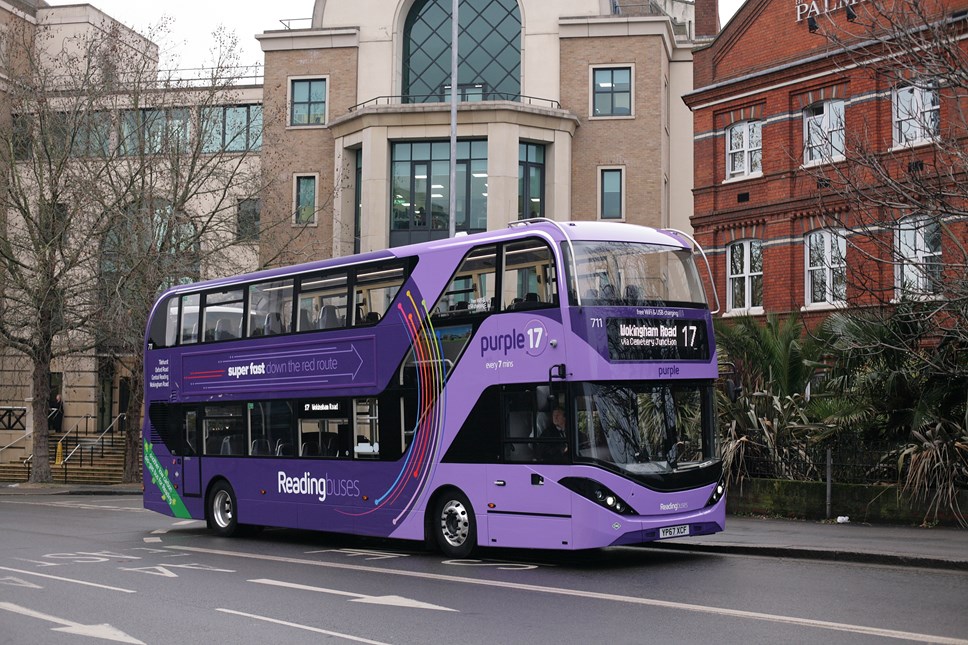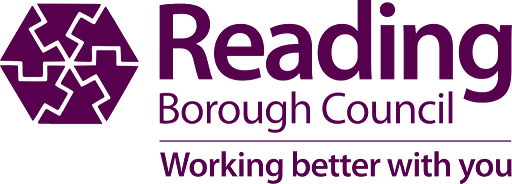
Plans for six new bus lanes recommended for approval
- New bus lane proposals to be considered at Council committee meeting
- Schemes aim to make bus journeys even faster and more reliable
- Council committed to improving environment and air quality for Reading residents
Plans to create a faster and even more reliable bus network in Reading by introducing six new bus lanes on key routes around the town are set to be discussed next week.
Reading Council wants to tackle poor air quality which blights some parts of Reading and create a healthier environment for residents.
£26 million is being invested into local bus services by the Council with the aim of attracting even more passengers to use them. Key to achieving that is speeding up journey times and increasing reliability.
The six new bus lanes being recommended for approval at a meeting of the Council’s Traffic Management Sub Committee on 11 January (https://democracy.reading.gov.uk/ieListDocuments.aspx?CId=170&MId=5212) are:
- A329 Oxford Road - outbound bus lane between Zinzan Street and George Street
- A329 Oxford Road - outbound bus lane between Pangbourne Street and Norcot Junction
- A4 Bath Road - outbound bus lane from Circuit Lane to Granville Road
- A327 Southampton Street - inbound bus lane from Pell Street to The Oracle roundabout
- A4 London Road - inbound bus lane between Sidmouth Street and London Street
- A4 London Road - inbound bus lane between Liverpool Road and Cemetery Junction
Reading already boasts an extensive and extremely popular bus network. 17.5 million passenger journeys were made between April 2022 and March 2023 and that number is expected to rise to 20 million by March 2024.
The six new bus lanes have been identified for areas in Reading where services suffer from the most delays due to congestion, particularly at peak times.
The proposal has been subject to two rounds of consultation - a four-week informal consultation in summer 2023, followed by a formal statutory consultation in November and December.
The Council has undertaken a thorough review of all consultation responses, acknowledging concerns raised as well as the positive comments. It believes improving the reliability, speed and frequency of bus services is key to encouraging more people to travel by bus, resulting in reduced congestion, fewer carbon emissions, better air quality and improved health and wellbeing for residents.
Without making significant changes to the transport infrastructure, including new bus lanes, and providing realistic sustainable transport alternatives, car usage is likely to continue to grow, creating greater levels of congestion and damaging the health of Reading residents.
A number of responses to the recent statutory consultation argued that motorcycles should be able to use the new bus lanes if introduced. The Council is responding with a proposal to make an experimental Traffic Regulation Order to allow this, which would then be reviewed at a later stage.
Cllr John Ennis, Lead Councillor for Climate Strategy and Transport, said:
“The proposals for six new bus lanes are part of a much bigger picture to cut congestion and improve the environment and health and wellbeing of Reading residents.
“We know that transport accounts for about 20% of all carbon emissions in Reading. We also know poor air quality is directly related to diseases such as cancer, asthma, heart disease and diabetes and can impact our most vulnerable residents.
“Reading already has a popular and well used bus network and it will become even more attractive to people if buses can avoid congestion and run even more reliably, faster and more frequently.
“Everybody knows there is limited road space in Reading and some of the proposed changes will impact on traffic flows in the short term, but this has been taken into consideration in the design of the new lanes and measures will be taken to mitigate this where possible.
“Without taking action now and investing significantly in public transport, car usage will continue to grow and lead to greater levels of congestion and poor health in our town.”
The proposed new bus lanes form part of the Council’s Bus Service Improvement Plan (BSIP) which secured funding from the Department for Transport.
They additionally contribute towards Reading’s net zero target by 2030, in line with the Council declaring a Climate Emergency in 2019, as its strategic vision as outlined in its new Local Transport Plan which will be finalised in the new year.
